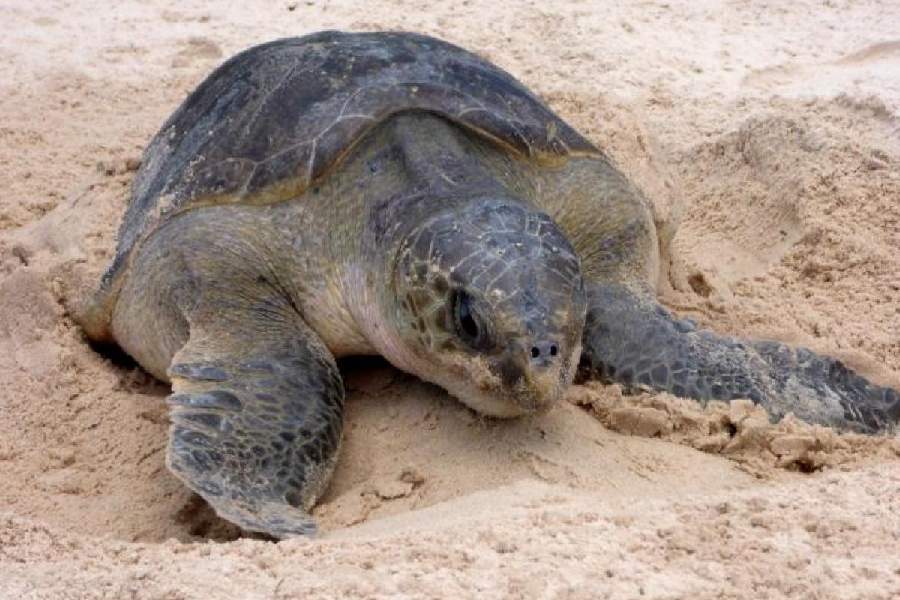The world’s largest nesting ground for olive ridley turtles on India’s east coast has shifted 14km northwards over the past three decades because of severe coastal erosion, Indian and Brazilian scientists have said in a study released this week.
The scientists, who used satellite imagery to track coastline changes along the Gahirmatha Marine Wildlife Sanctuary (GMWS) in Odisha, said the erosion had affected the olive ridley turtles’ nesting behaviour, driving them from mainland beaches northwards and into islands along the coast.
Olive ridley turtles, found mainly in the warm and tropical waters of the Indian, Pacific and Atlantic oceans, are among the smallest of sea turtles and have been named after the greenish colour of their shell and skin.
Marine biologists have described the GMWS along Odisha’s Kendrapara coast as the world’s largest nesting ground for olive ridley turtles, with tens to hundreds of thousands of them arriving between November and April to mate and lay eggs on the sandy beaches. The sanctuary is a popular tourist destination in Odisha.
“Our findings corroborate anecdotal observations of the turtles’ nesting
behaviour in recent years,” Manoranjan Mishra, professor of geography at Fakir Mohan University, Balasore, who led the study, told The Telegraph. “They’re nesting beyond the boundaries of the GMWS — conservation measures need to be expanded northward.”
Mishra and his colleagues used satellite imagery to examine changes along a 92km segment of the coastline and quantified coastal erosion levels from 1990 to 2022. Coastal erosion is a process by which sea waves carry away soil and sand from the coast, virtually gnawing away at the shoreline.
The scientists divided the 92km segment into smaller “transects” and noted the highest erosion levels in 2020-21, affecting 90 per cent of the transects. Over 75 per cent of the transects experienced erosion also during 1995-96, 2009-13, 2015-16 and 2019-20.
Estimates of turtles arriving annually for mass nesting in the GMWS have varied over the past two decades, from peaks of over 700,000 to counts of below 50,000. For reasons that remain unclear, there was no mass nesting in 2002, 2008 and 2014.
The study has suggested that erosion influences the turtles’ mass nesting behaviour. In 2020-21, for instance, when over 90 per cent of the transects experienced erosion, there was a roughly 50 per cent decline in mass nesting.
“The turtles know exactly what they want for nesting, and that is fine sediments,” Mishra said. “The erosion impacts the quality of the beaches and this is causing them to find more suitable places — in this case northwards towards Wheeler Island.”
Wheeler Island — now named Abdul Kalam Island — is the site for a missile testing and launch complex, maintained by India’s Defence Research and Development Organisation.
Scientists say the long-term implications of the northwards movement of the turtles’ nesting ground remain unclear. “Our findings underscore the need for turtle conservation measures to keep pace with coastline changes,” said Tamoghna Acharyya, associate professor of marine sciences at Berhampur University and a study team member.
Coastal erosion is a natural process but is enhanced by construction or modifications near or along the shoreline. Sea-level rise attributed to global warming and lower levels of sediments carried by rivers — such as the Mahanadi in Odisha — into the sea also contribute to coastal erosion, Acharyya said.
The research collaborators included environmental scientist Augusto Guimaraes Santos from the University of Paraiba, Brazil, and others from various academic institutions in India and Brazil.










